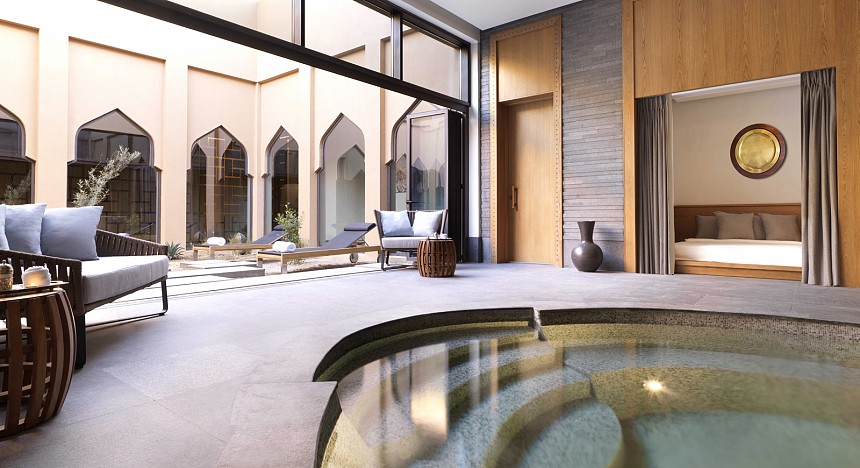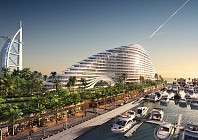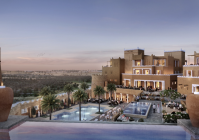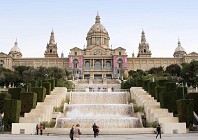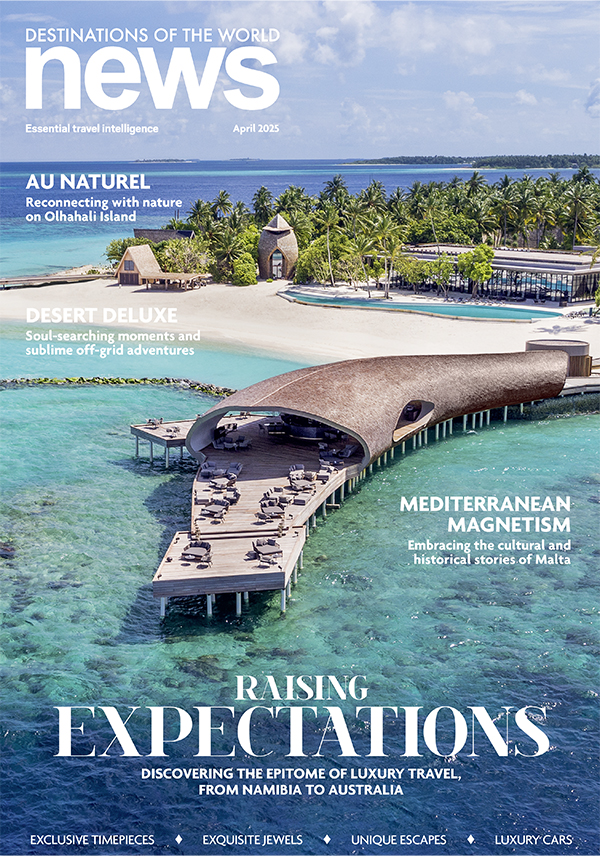Atelier Pod is the design studio behind some of the most innovative and interesting five-star hotels in the Middle East and beyond, from Four Seasons Resort Marrakech to W Hotel Casablanca and the Anantara Al Jabal Al Akhdar Resort in the mountains of Oman. In this interview, the company’s owner, Lotfi Sidirahal, tells us about the creative process behind some of these projects and the future trends radicalising the world of hospitality design

How do you kick-start the creative process when it comes to five-star hotel design? Besides coffee.
I am not a coffee person, but a cup of green tea would do the job. The creative process starts with allocating enough time to research and writing, and this upstream work is necessary to define the “design intent” and the story I want to tell. Concept creation in architecture and interior design, in my opinion, are similar to a cinematographic process. First, I draw a storyboard, in which all remarkable scenes are singled-out, and then I start shooting, that is, drawing the details around the “vedette” scenes.

Your hotel projects are spread across some very exotic locations. How does keeping “sense of place” factor in to your design process?
The “sense of place” must be integrated in the design DNA at the upstream phase of the project. It is not only a flavour touch added to give local colours to the space, which is why I strive to understand the aesthetic fundamentals of the cultural environment of the location, and I incorporate that with the specificities, such as landscape and location. In hospitality design, there is also the brand that needs its identity reflected on these elements, which constitutes an indivisible whole.

Your hotel projects are spread across some very exotic locations. How does keeping “sense of place” factor in to your design process?
The “sense of place” must be integrated in the design DNA at the upstream phase of the project. It is not only a flavour touch added to give local colours to the space, which is why I strive to understand the aesthetic fundamentals of the cultural environment of the location, and I incorporate that with the specificities, such as landscape and location. In hospitality design, there is also the brand that needs its identity reflected on these elements, which constitutes an indivisible whole.

Tell us more about your experience working on Anantara Jabal Akhdar – a luxury resort in such a rural mountain location.
It was not just a design experience; it was also a truly unique human one. This was my first project in Oman, and I fell in love with the country and its people. Before getting accustomed to the breathtaking views, I spent several days with my team visiting the area in order to fully identify with the locality on architectural, communal, and traditional scopes before initiating the resort’s design. This exploration phase was crucial in order to create a contemporary rooted resort within the extraordinary heritage of the region. I wanted to make a design statement in the hotel landscape in Oman, by offering a resort that raises to the rich culture of the country; I understood that in order to achieve this, I needed to put in an incredible amount of thought and energy in order to restore the essence of this region, Anantara Al Jabal Al Akhdar.

For that we had to conceive the finest detail in every aspect of the resort to enrich the guest experience. When it comes to the resort’s architecture, the inspiration was derived from the Omani forts and the landscapes’ oases. For the interiors, we had put aside all that is traditional – ceilings, chests, and doors – to create the interiors as well as the furniture. We had designed, specifically for this project, 80 unique furniture pieces. The base of a chest was reused in a sofa and the doorframe was the inspiration for a luminaire’s pattern, for example, all achieved in a contemporary and sophisticated manner.
What luxury hotel design trends do you expect we’ll see emerge over the next five years?
Luxury urban hotels will assert a stronger presence in cities, reviving the historic role of ancient palaces. For this purpose, urban luxury hotels will need to invest more in achieving impressive designs to create a surprise element; a more elaborate strategy would be to fuel social media. The present interrelation between the guestrooms and the public areas will soon become history. The brands’ differentiation will be present across all sections of the same hotel; we could picture having one brand for the accommodation and a different one for public spaces. This potential cross-functional combination will be according to the hotel’s location and its clientele.

Aesthetically speaking, we will be headed towards a radicalism of design, either to bring an element of surprise or shock that will draw maximum attention and generate a greater flow; similarly, we may also witness an opposing trend that will demand more minimalism. As far as luxury resorts are concerned, there is more to explore as the guest’s availability, in my opinion, is underutilised by hoteliers. We will also see more and more integration of wellness concepts, where “simple” and “authentic” will be the main key words. I am convinced that a successful luxury hotel design is one that extends the service to complete the guest experience; it is not just about design that gives a nice look and feel or that is limited to the experience container. Designers should support hoteliers to showcase their know-how and create new hospitality services together.
What are the challenges and opportunities of being more sensitive to the environment – and sustainable materials?
There are multiple challenges the designer is faced with when it comes to environmental issues and sustainability. Considering this aspect in a project requires more research efforts and more work, making sure that the local materials are maintenance friendly and durable. However, with the environment as the main concern worldwide today, there are more and more local suppliers of eco-friendly materials, and as a designer I try to come up with simple gestures and optimum solutions to achieve a sustainable and eco-friendly project.


